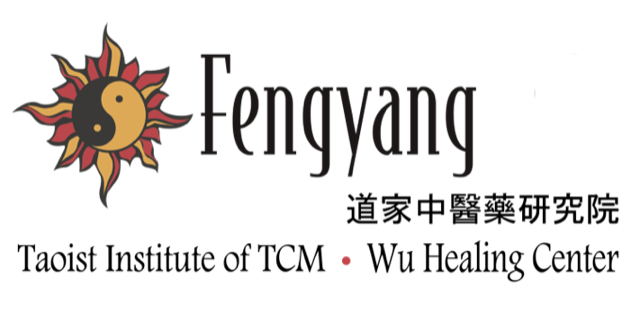What You Need to Know About American Ginseng
By Dr. Ming Wu
INTRODUCTION
American ginseng, aka Xiyang ginseng (西洋参), Huaqi ginseng (花旗参), and Fenguang ginseng (粉光参), is a perennial herb native to the eastern deciduous forest of the United States and in southern Québec and Ontario in Canada. For many centuries, Native Americans have been using its leaves and roots for food, and as a remedy for fever.
American ginseng plant has compound leaves with a long stem and five leaflets. Its main roots are round or spindle shaped, with a light yellow, or yellowish white color. The seed pots are red, and at the top of the plant. American ginseng (Panax quinquefolius) is in the same genus as Chinese ginseng(Panax ginseng C. A. Mey), and has many beneficial effects that Chinese ginseng has.
(en.wikipedia.org/wiki/American_ginseng)
(Photo Courtesy of Ming Wu)
American ginseng has been harvested and exported to Asia for over 300 years, ever since a Jesuit priest named Joseph Francis Lafitau found ginseng plants growing near Montreal, Canada in 1716. Today, ninety-five percent of the wild ginseng roots harvested goes to Asia, mostly to buyers in China and Korea, who prize bulbous roots shaped like turnips that are typically found only in the wild.
USUAGE and INGREDIENTS
In Chinese Medicine, American ginseng is believed to help replenish the body’s Qi, especially for the three Qi channels such as the heart channel, the lung channel and the kidney channel. Because of its mild quality, it is suitable for most people, and for all seasons. Unlike American ginseng, Chinese ginseng has a stronger replenishing function, and therefore, may not be suitable for people with excessive internal heat, people with insomnia and young people. It could cause dizziness, nose bleeding, insomnia, and constipation, if used incorrectly.
An ancient Chinese Medicine book “Ben Cao Bei Yao (本草备要)” published in 1694 described the American ginseng as bitter sweet, cooling, calming, can improve lung function, can help increase bodily fluid, and suitable for people weak with excessive internal heat. Another Chinese Medicine book “Ben Cao Zai Xin (本草再新)” published in 1933 stated that American ginseng can treat symptoms caused by excess heat in one’s lungs, such as cough and excess sputum. It is also beneficial for strengthening the body from blood loss, fatigue, child birth, etc. and for calming the nerve systems.
Modern medical researches have found that American ginseng can inhibit the activities of central nervous system, reduce fever, relieve pain, and treat insomnia. It contains antioxidants, and can improve immunity, prevent arteriosclerosis, high blood sugar, and high cholesterol levels. The health benefits of the American ginseng are mainly contributed to the over 10 types of triterpenoid saponins that are found mainly in the roots. It also contains many organic acids, polysaccharides and amino acids that are beneficial to health.
Below is a list of its many health benefits:
Prevent a variety of cardio vascular diseases.
Treat neurosis and insomnia.
Increase immune system functions.
Treat bronchitis, and chronic cough.
Treat endocrine disorders, such as irregular menstruation.
Improve digestive system health.
Prevent hepatitis.
Improve sexual functions.
Current Situation of Wild American Ginseng
(Wild ginseng ©Dennis W. Woodland)
Towards the end of the last century, wild American ginseng population has significantly decreased due to over harvesting. To protect the sustainability of the wild American ginseng population, US federal government has set up programs and regulations on wild American ginseng harvesting and exporting. Wild and wild-simulated American ginseng roots can only be legally exported if they were harvested from plants that are 5 years of age or older and were legally harvested during the designated State harvest season. Of the 19 States approved by the U.S. Fish & Wildlife Service, 18 States require wild ginseng plants to have 3 leaves (each leaf is comprised of 3-5 leaflets), which ensure that plants are at least 5 years old, and one State (Illinois) requires wild ginseng plants to have 4 leaves and to be 10 years old.
Due to decreasing supply and increasing demand, wild American ginseng prices have been trending steadily upwards over the past years. Furthermore, the older the roots, the more expensive they are. For example, a Chinese buyer in 2007 paid $400,000 for a 300-year-old root weighing less than a pound.
To meet the increasing demand of the Asian market, US and Canada farmers started to cultivate American ginseng. American ginseng cultivation has doubled in production over the past 20 years. Today, the majority of the American ginseng on the market is cultivated. In recent years, several areas in China also started cultivating American ginseng.
The official definition of wild American ginseng is “an unprocessed plant, dry root or live (fresh or green) root that is not grown or nurtured by a person. This includes cultivated seeds that are, planted in a wild forest habitat and not tended in any way prior to harvest.” Compared to the natural environment wild American ginseng grow in, cultivated American ginseng is sown under artificial shade in prepared beds and often requires the use of fertilizers and pesticides. Wild American ginseng is more potent in its health benefits and safer to consume than its cultivated counterpart.
Click here to purchase wild American ginseng from our store
Sources:
https://en.wikipedia.org/wiki/American_ginseng
http://www.majesticginsengproducts.com/index.html
http://yibian.hopto.org/shu/?sid=197
http://nymag.com/daily/intelligencer/2015/08/ginseng-americas-alt-viagra.html
http://www.poptool.net/health/dir_cndrug/f_2/dir_44/zhongyao_884.html
http://dnr.wi.gov/topic/endangeredresources/ginseng.html
http://www.fws.gov/international/permits/by-species/american-ginseng.html




